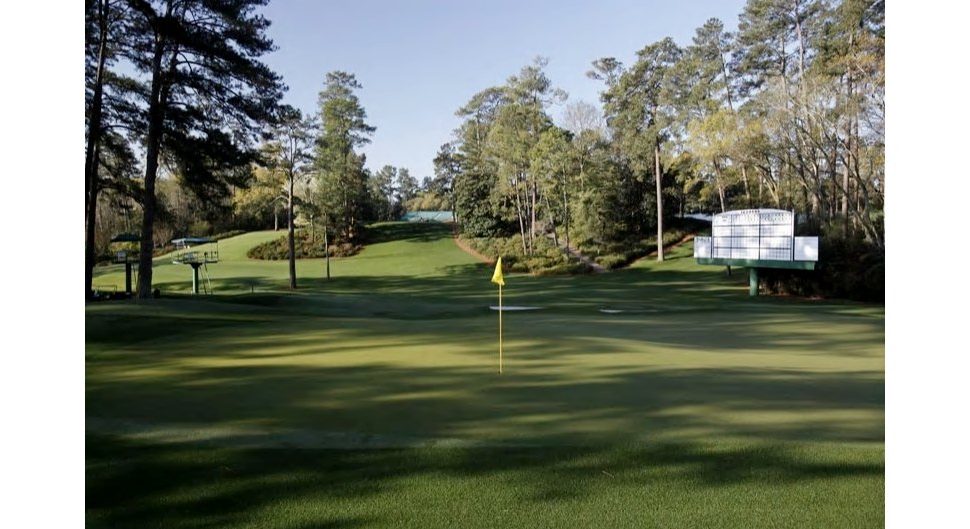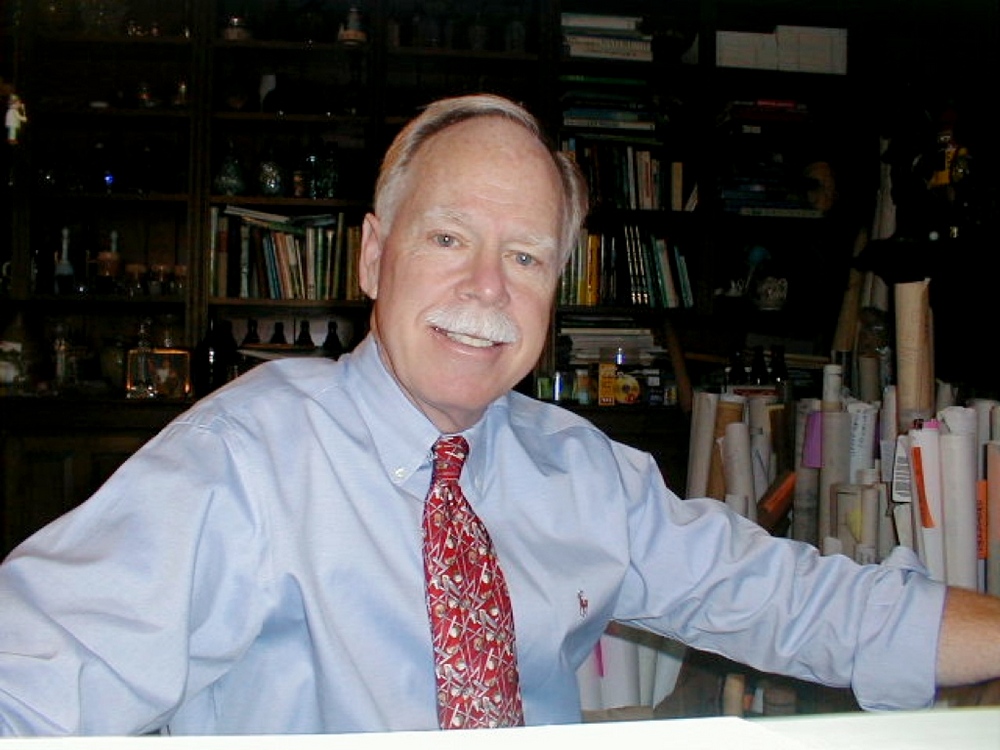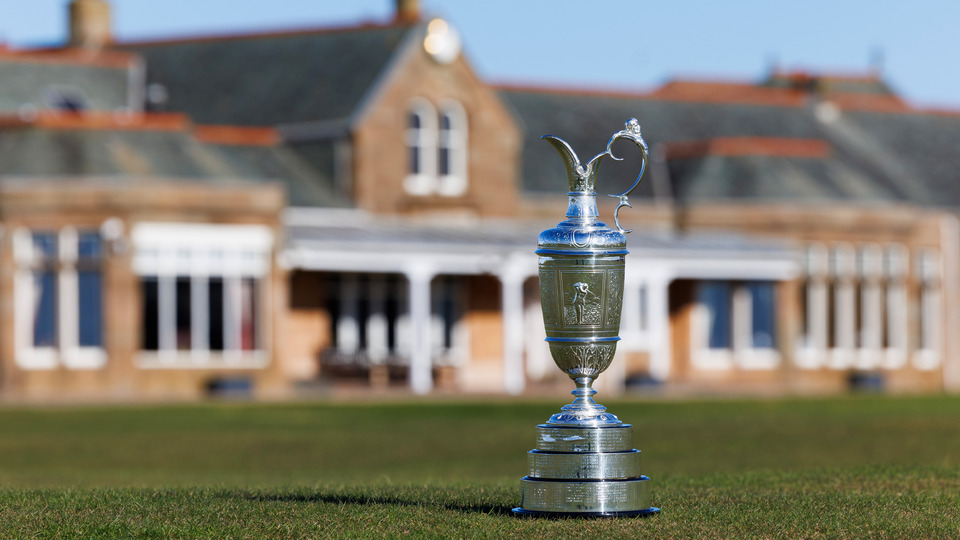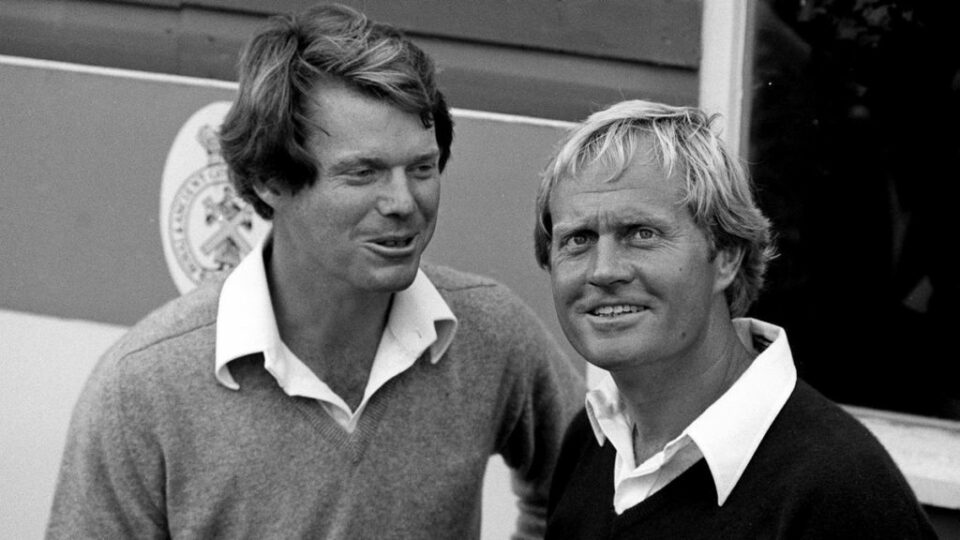
Given the length a number of elite players hit the ball off the tee -- do the basic strategic elements architects seek to include -- such as angles of attack -- even really matter for such players?
Agustin Piza: I believe they do but now we are dealing with a new category of long hitters like Bryson Dechambeau. He broke the code and found out that eliminating variables on his swing and clubs provides him more control. Now he’s doing it with his long drives -- no matter where they land. The majority of the time his second shot is with a higher lofted club -- wedge -- which reduces the chance of a left or right miss with a longer club. Regardless, facts are the longer hitters don’t necessarily win at the Masters.
John Fought: I still think strategic elements are critical to a golf course's value, but length can soften the effect by a long hitter when playing over corners of doglegs or having a short iron on their approach that the angles and risk/reward is compromised. That is exactly what DeChambeau did when he hit driver on many of the holes at the U.S. Open.
John LaFoy: At Augusta I think the planting of so many additional trees has had more effect on the angles than the length of the ball, although that has been a factor too. Architects have always tried to design angles to attack golf courses, especially greens. That is a basic element of strategic design. Regardless of how far balls go I think that will always be relevant and matter to even the longest hitters, although maybe diminished to a certain extent. I think you see that on drivable par-4 holes, like the 10th at Riviera, where the angle is important regardless of how long the players hit their tee shot.
Rogelio Abarca: Absolutely, it is important to consider going back to the basics of design and using our creativity, combining attack angles, elevations and natural elements such as trees could help improve the strategy of the game. Taking the 13th, as an example, rather than lengthening it, perhaps think about changing the angle slightly and lowering the elevation of the tees a few feet, thereby creating different situations for long hitters and make the tee shot more difficult for anyone trying to fly over the trees.
Nathan Crace: Yes. Angle of attack, resistance to scoring, and other pillars of architectural theory will always be at the core of the way we design golf courses for players of all skill levels. In fact, an argument can be made that playing to certain pin positions from certain areas of the fairway is actually more important to elite players regardless of length off the tee because they are the ones who actually can hit to a specific section to a specified landing area with regularity.
The final chance to prepare. #themasters pic.twitter.com/RQqmLk3RBT
— The Masters (@TheMasters) November 11, 2020
Putting green speeds and contours lie at the heart of Augusta National. How do you deal with clients wanting to do similarly?
Rogelio Abarca: It is always important to try to educate clients in this regard, since the characteristics of the greens in Augusta National are unique and we could say that even unrepeatable outside their natural context. They range from the undulation of their shapes and the slopes that are among the fastest in the world with a sub-air system to control humidity, so, trying to ask for something similar only adds unnecessary pressure to the maintenance staff resulting in higher maintenance costs. On the other hand, the game can be slower and less enjoyable. Greens should be fun and friendly to maintain for most non-professional players.
John LaFoy: I have never had to deal with a client who thought we should try and duplicate in any way the putting surfaces at Augusta. I think in the back of most course owners, green chairmen, and developers minds is the fact that greens with that much slope are not practical on every golf course. I have re-designed more greens because of too much contouring than I have been asked to add more contour and I like contour. Most clubs are concerned about more cupping areas than more contours.
The size and slopes of the putting surfaces at Augusta are of utmost importance. Clifford Roberts always thought that the greens surfaces were very large and in the 60's had George Cobb measure them. According to Mr. Cobb, the sizes did not stack up to how big Mr. Roberts thought they should be so he had Mr. Cobb re-measure them until they came up to the size he "thought" they were. Mr. Roberts also thought that over the years that the contours somewhat mellowed due to topdressing, which was done frequently on the greens. As a result, we re-established the original green contours to the greens that we re-built, including the 13th. I believe Mr. Roberts was correct. Other green contours, like on hole #18 have been mellowed, but the heart of the course revolves around the putting surface contours.
John Fought: The average player cannot handle high green speeds -- plus 13 on the Stimpmeter -- with the bold contours Augusta has in its greens. Heck, many of the best in the world have trouble with the greens at Augusta. Average players do not possess the skill or touch to play these types of greens.
Nathan Crace: The rush to faster green speeds puts an unfair burden on superintendents because golfers think they need lightning-fast greens and faster green speeds translate into us being forced to design greens that are flatter and--frankly--boring. At the end of the day, clients have to understand that what is most important to golfers is healthy turf with good speed and consistency from green-to- green during a round. The stress on the turf -- and the turf staff -- to maintain super-fast greens is costly.
16 days until #themasters, created by co-Founders Bobby Jones and Clifford Roberts. #cominginapril pic.twitter.com/T1ydygthmH
— The Masters (@TheMasters) March 17, 2018
Agustin Pizá: After the Masters, we do get a lot of requests for the same greens as Augusta which is attainable. Our designs provide contours but maintenance is the critical factor. Making a golf course doesn’t have to be overly expensive but maintenance will be if you are looking for Augusta quality greens. It’s all about the budget from conception to the first putt.
Is there any hole from Augusta National you have sought to mirror to some degree in your designs?
John Fought: I haven’t really tried to copy any of the holes at Augusta. However, #12 with its angled green has always influenced my thinking in building shorter par threes. I also have found the green at #14 very interesting. It’s wonderful.
Nathan Crace: Early in my career, we had a client who wanted to "mimic" the 12th at Augusta National on a par-3 at a new course he was building. We designed it, had a meeting to show him the green plan and discuss it, and he finally relented to our view that it felt contrived. As a general rule, I'm not a fan of copying holes from other courses and forcing them onto another site--and it's difficult to replicate a famous hole and make it look like you're not trying to copy it.

Agustin Pizá: Augusta National has always inspired me to aim for the best. I get inspired by nature, the setting, the quality, the enjoyment, well-being, place making, the experience, the proportion, strategy and aesthetics. Those are the elements I try to mirror in my designs but, I don’t consider myself as a cover band so I would not intentionally mirror an actual hole of Augusta. I seek for the challenge of reinventing myself on every project thinking of Augusta National as a whole and not as a hole. Using the elements, I mention as main objectives for my designs.
John LaFoy: I can't think of any right off-hand. There may be elements here and there, but Augusta does not have any elements that are totally unique. No golf course does, unless it is something so bizarre that no architect would copy it. Golf holes should be unique to the property that they are built on and unless you are designing a hole where just about all of the geographic features are the same as a hole at Augusta, I don't think mirroring a hole there would work. If it obvious that a hole was mirroring Augusta, I think it would not go over particularly well. No one wants to see a copy of the Mona Lisa.
Rogelio Abarca: Not particularly a hole as such, but of course generally yes, a golf course like Augusta National possesses such symbolism and history that it is certainly a source of inspiration for any designer, it is difficult to capture a consistent design intent due to all the changes that have been made, I could say that I like to emulate Green complexes and the variety in combining design elements to achieve an architectural composition.
An exemplary fall day at Augusta National Golf Club. #themasters pic.twitter.com/iY6Vly64wr
— The Masters (@TheMasters) November 9, 2020
Given the global limelight the Masters has clearly achieved what are the most profound lasting elements -- both good and not so good?
Rogelio Abarca: On the good side the routing, On the flip side the fairways in relation to the golf corridors and the management of the trees. The fairways have been considerably narrowed by adding rough and trees in order to increase the difficulty. This has caused a sacrificing of the multiple angles provided by the original layout that they gave great strategic value to the golf course.
John LaFoy: I think the good is the experience that the patrons that visit the Masters Tournament receive. I think the golf club wants to make the Masters Tournament the number one sports venue in the world, and I am not so sure that they have not done that. I think that is why they have bought the surrounding property, so as to make your visit there a total experience. They wanted to control the parking, the roads, the lighting around the course (off course property), the structures, etc. so that they could make sure there is nothing to detract from the tournament experience. As far back as 1975 there was talk about putting the maintenance facility underground, like Disneyworld.
Of course, the golf course itself is the centerpiece of the "good" and that has not changed. There are some things I would have done differently, like reducing the number of trees added, especially on the 11th hole, 15th, and 7th holes, but I am sure that there are those that will disagree. I do not want to see the objective of the course strategy to be merely keeping the ball between the tree lines. From a member's perspective I would like to see at least one additional set of tees built to make the golf course more playable for the older and higher handicap members. Although no member or guest would ever admit it, it can't be enjoyable strictly from a golf standpoint to shoot very high scores because of the length of the holes alone.
Agustin Pizá: The quality, contrast, aesthetics and strategy are all superb. The involvement in growing the game and creating opportunities for aspiring golfers is admirable. Succumbing to the commercial side of the industry by constantly lengthening the course is something I would like to see this iconic and historic golf course take a stand.
John Fought : The Masters is a celebration of golf at it best. The only negative, is how perfect the course is. In the real world this is generally too expensive to achieve for most courses.
Nathan Crace: Every year -- except this year of course -- the Masters kicks off the official "golfer cabin fever" season in the United States. Golfers watch the tournament, start thinking about the upcoming season and begin knocking the rust off from the winter. Of course, there are more great memories from the Masters over the years than one can count--from Sarazen's double eagle to Jack's 6th green jacket to Tiger's return to the top last year. The flip side would be some unrealistic expectations from course owners, green committees, and golfers who think their courses should look and play like the Augusta National they see on television.
The Participants
John Fought
A Scottsdale Arizona based golf course architect. He has been involved with more than 75 design projects over his 32-year career in design.
John LaFoy
Graduated from Clemson University in 1968 with a BA Degree in Architecture. After three years of active duty as a Marine Corps officer began golf architecture career in 1973 with George W. Cobb in Greenville, SC. One of his first assignments was working with Mr. Cobb at the Augusta National Golf Club on renovations to the golf course, continuing for a year after the death of Clifford Roberts. He is a ASGCA Fellow.
Rogelio Abarca

Senior Design Associate with Greg Norman Golf Course Design. Currently working on new projects in Mexico and the Caribbean and has been actively involved in more than 15 large-scale international projects. Has 15 years of experience in all stages of project development of world-class golf, from concept to construction. Is a member of the European Institute of Golf Course Architects.
Agustin Pizá
Award winning architect Agustin Pizá earned a Bachelor of Architecture degree from ITESM and a Master’s Degree in Golf Course Architecture from Edinburgh University in Scotland. He is a proud member of both the European Institute and the American Society of Golf Course Architects. For 22 years, Pizá has worked with legends of the game and world class golf developments. His designs are known for delivering quality, aesthetic and strategic golf courses which attributed to his feature in Golf Inc.’s Power 2020 issue as an upcoming and coming superstar in the golf industry.
Nathan Crace
A graduate of Mississippi State University's PGA Golf Management program and a former club professional, Nathan has been a golf course architect for more than 25 years. He is a member of the American Society of Golf Course Architects and was named to the Board of Governors this year. Born in Louisville, Kentucky and raised in Indiana, Crace now lives in south Mississippi with his wife and three children. He is a principal with Watermark Golf / Nathan Crace Design.







